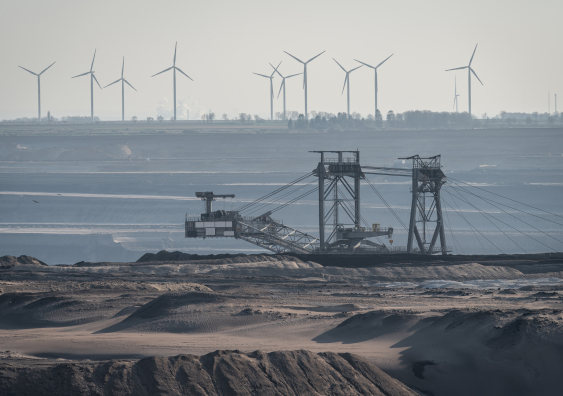New research highlights how contractor hiring for cost reduction creates safety risks in mining, prompting calls for stronger regulatory oversight.
There is an urgent need for governments and regulators to provide more effective oversight of contractor safety in the mining industry, said Michael Quinlan, Emeritus Professor in the School of Management and Governance at UNSW Business School.
In mining jurisdictions like Western Australia and Queensland, he said, there was clear evidence contractors were over-represented in mine fatalities.
āThis may well help explain while the incidence/frequency of mine fatalities has not improved, at best, in the past decade or more,ā said Prof. Quinlan.
He noted that in Queensland, the Mining and Energy Union was pressing for a more thorough investigation of mine fatalities and known risk factors to enhance mine safety.
Prof. Quinlanās comments come off the back of new research exploring how traditional approaches to contractor management, focused primarily on cost reduction and operational flexibility, could create unforeseen risks and potentially catastrophic outcomes.
The study, '', analysed decades of quantitative and qualitative research across multiple countries and industries. Ā
Prof. Quinlan worked with University of Newcastle School of Health Sciences graduate Heather Jackson, whose PhD examined 51 serious mine incidents, to examine 120 publications, including peer-reviewed articles, government reports and theses, focusing on 65 key studies investigating safety outcomes in mining operations.Ā
The research spanned developed and developing economies, focusing on Australia, South Africa, the United States, Turkey and various South American mining regions.
Media enquiries
For any related media enquiries, please contact Katie Miller.
°Õ±š±ō:Ģż0408 033 715
·”³¾²¹¾±±ō:Ģżkatie.miller1@unsw.edu.au
The role of contractors in mining
Published inĀ The Economic and Labour Relations Review, the research revealed how contracting practices had transformed traditional work arrangements, creating challenges for workforce management and safety.Ā
The growth of contracting had been associated with other shifts in work practices, including the increasing use of fly-in-fly-out (FIFO) and drive-in-drive-out (DIDO), whereby workers lived remotely from the mine rather than a nearby mining town and lived in barracks while they were onsite, the researchers noted in the study.
These changes extended beyond simple employment arrangements, and the researchers said there had been a growing shift to āhot-beddingā ā analogous to hot-desking among service workers.Ā Ā
This practice, where workers shared accommodation on different shifts, created additional fatigue management challenges and potential safety risks.
The impact on working hours emerged as a significant concern. Contract workers were found to work longer hours, with one study showing contractors averaged 65.85 hours compared to direct employees at 52.40 hours.Ā
This disparity was even more pronounced in certain sectors, with contractors working longer hours (51.86 per week) compared to direct employees (50.12) across the industry, which was largest in the metalliferous sector (65.85 compared with 52.40).
The research identified that these extended hours created heightened safety risks. āBeing a contractor was a risk factor for injuries associated with long working hours,ā the researchers found.Ā Ā
This risk was compounded by the nature of contract work, where ācontractors perform ādirtierā work, have lower job autonomy, and invoke paternalism from the principal contractor and principal contractor workmatesā.
The business case for change
The research revealed that cost reduction remained the primary driver for increased contracting, though the economic rationale proved more complex than surface-level savings suggested.Ā
"The primary drivers for this growth are economic. Contract labour is typically paid less than directly engaged mineworkers,ā the researchers said in the study.Ā
āContractors can be more easily 'discharged' in a downturn, and if self-employed will not have access to workers' compensation or other regulatory entitlements, are less likely to be unionised or to raise complaints on-site.ā
The wage differential was significant. A , for example, found contractors were paid up to $30,000 per year less than direct employees. However, these apparent savings often led to increased costs in other areas.Ā
The study identified that āresponsibility for meeting compliance costs was distributed unequally, with the majority borne by contractors and exacerbated by competitive tendering processesā.
The research uncovered how market conditions influenced safety outcomes through contracting arrangements. Coal prices below $55/tonne appeared to be associated with increased multiple fatality incidents, the researchers noted.Ā
They cited an unpublished review of Queensland mining incidents that found ā6 of the 7 recent fatalities were contractors and 9 out of 10 of high-potential incidents involved contractorsā.Ā
The paper also found there were clear underlying causes that repeatedly occurred in relation to mine fatalities, and the presence of contractors tended to accentuate these risk factors identified by the ³¾“Ē»å±š±ō²õ.Ģż
The financial pressures on contractors created cascading effects throughout operations. āMining companies identify failure of the contracting company to take responsibility for supervising their employees and ambiguous OHS regulatory responsibilities,ā the study said.








